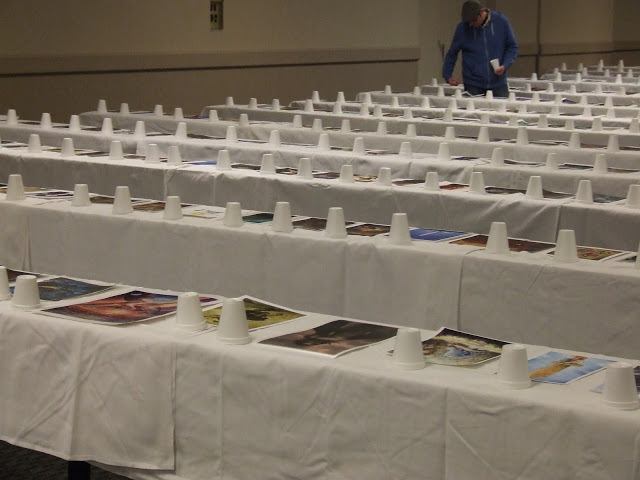
Spectrum 18: Judging
Wednesday, March 23rd, 2011
Gregory Manchess
The saddest thing for me about judging this year’s entries for Spectrum is realizing that it will be far too long before I get to help judge again.
The most exciting part of course, is getting a glimpse of the field at large by studying five thousand paintings for a day. When the Fenner’s opened the doors to the judging room, our jaws dropped just slightly, enough to realize it would be a long day. But not one of us was deterred. The pictures can’t portray the feeling.
We were a tight group. Starting with Friday night’s dinner to get to know each other better, we seemed very much of the same mind about applying our combined experience toward finding the best pieces in the room to showcase. Happily, we were able to tease one another, to goad ourselves into reaching our goal. I am a firm supporter of humor in tough situations, and there was plenty to go around.
Here’s the process, briefly: we all had a cup full of beans. If you like a piece, you put a bean in the cup by the entry. The cups are upside down so no one can be tempted to vote just because others have already. If a juror sees an entry they particularly like and want to have the other judges take a closer look at the end of the day, we put a paperclip in the cup. The special choices will be argued about later when these knockout pieces are considered for medals.
We were all in agreement that we should be liberal with our votes this year, and liberal with placing paperclips. The system works better with more yay’s than nay’s. Personally, I’ve figured out over the years that while judging, if I stop to study a piece, and my head ponders long enough to be confused or immediately undecided, then that piece should most likely be voted for inclusion. Voting against most pieces not only makes for very awkward medal decisions, but also a very uninteresting show. Mostly because the range of work gets cut to a minimum, and a broad-ranged show is more appealing.
What we are not doing is looking to change the face of the genre, or looking for the next amazing ‘talent’, or shaking up the art world. We are looking for good, solid, professional work that stimulates, excites, and inspires. Jurors do not control how the art is perceived, they merely react to the quality presented to them. In this way, the artists change the direction of the field.
But I can say without any doubt that this year’s entries ramped that difficulty up another notch on the awesome scale. The last time I judged was 10 years ago. The quality of the paintings, the skill, the color, the drawing abilities, overall has risen since that time.
This made the medal rounds that much harder. (thanks a lot, you guys.) All the judges had favorites that they championed for the others to pay attention to. As you can imagine, this made picking the so-called ‘best’ rather complicated. There were many, many pieces that had been chosen for this round (by paperclip) and to whittle them down to two pieces for gold and silver demanded focus, fairness, understanding, and occasionally, a few heated, yet jovial ‘discussions.’ Had this been a battlefield, armor would lay everywhere, and each of us would be limping home, missing a limb. But no one lost their head.
That there were double medal winners was a subject we spent much time debating. We would either have to toss medals right and left, or we were going to have to grit our teeth and make hard decisions. At the end of the day, it was fairness and quality that won out. No question. Another group may have made all different choices, one can assume.
This much I can guarantee: it’s gonna be a killer annual.
Thanks Cathy and Arnie! Jurors, left to right: Nathan Fox, Shena Wolf, Brandon Shiflett, me, Jarrod Shiflett, Boris Vallejo, and Julie Bell.


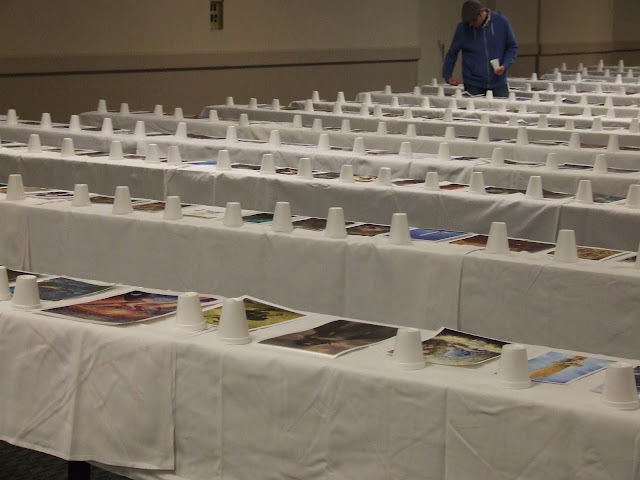

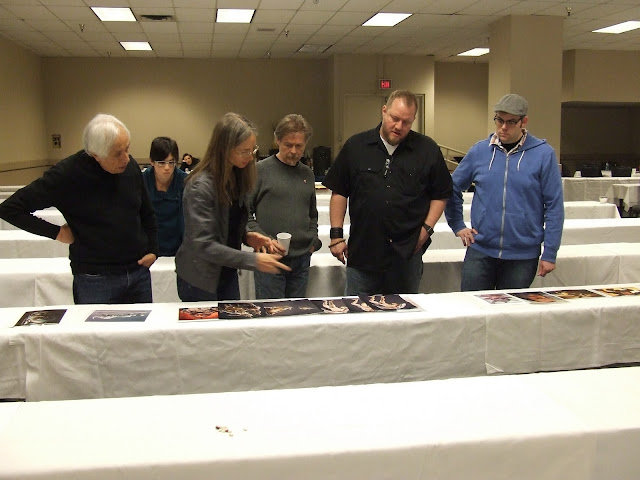
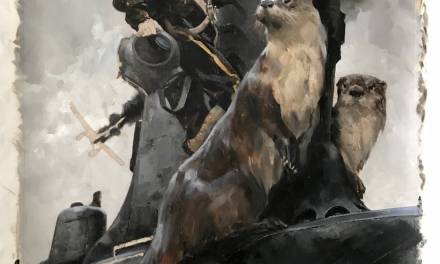
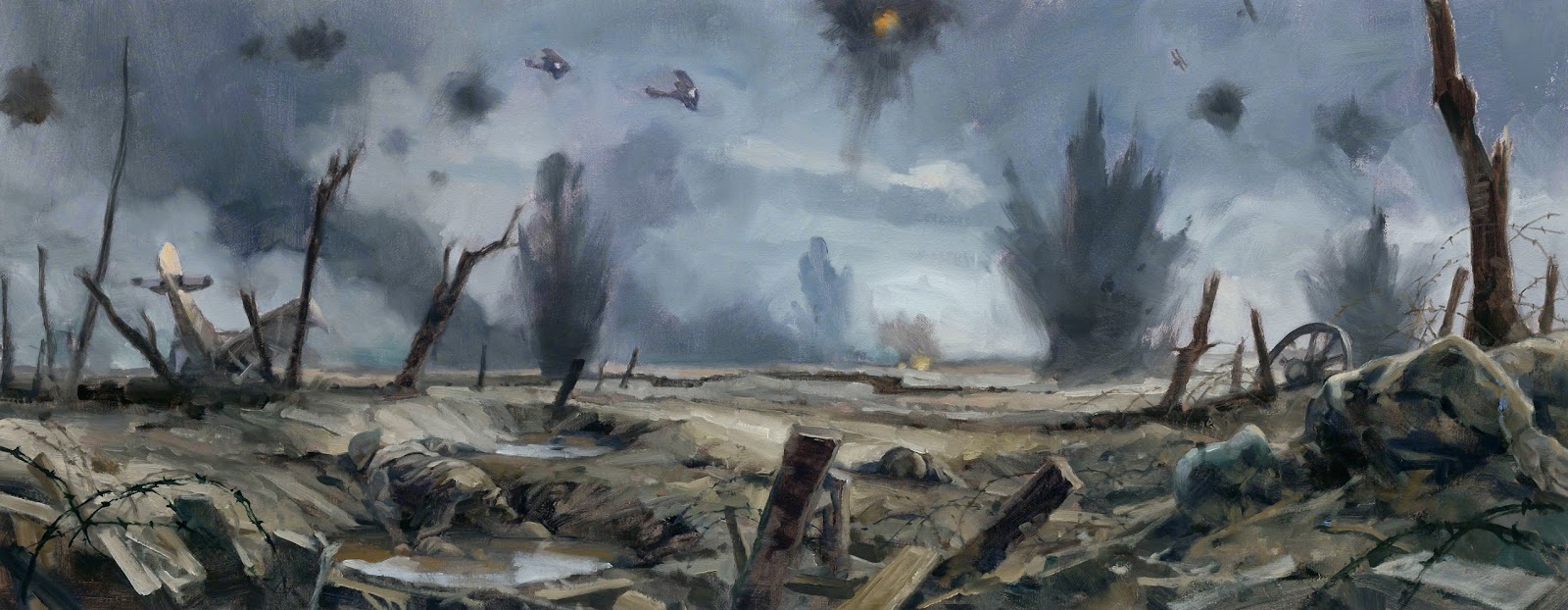
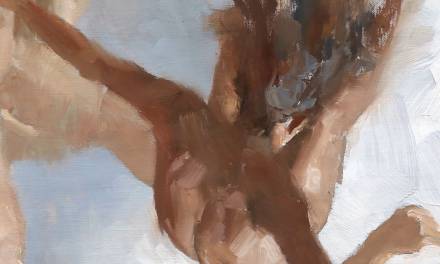
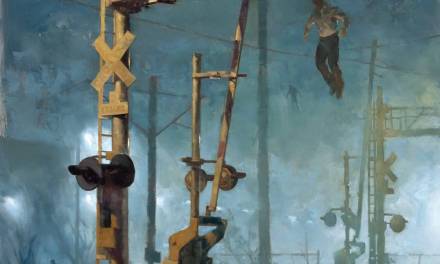
So Excited! Can't wait to see! 😀
I'm SO nervous about getting in – this is it for me, what a huge dream! But when I was thinking about it the last few weeks, thinking of the works I've sent, I started loosing my self-confidence…
But after I read “if I stop to study a piece, and my head ponders long enough to be confused or immediately undecided, then that piece should most likely be voted for inclusion”… man, this phrase filled me with hope! Not that I think that the works were good, it's not that… but I realized that I at least really had my chance of getting noticed, even if my work was not good enough to get votes.
Just wish I'll be able to fullfil this dream. If not this time, at least someday!
Yes, very exciting indeed! Spectrum tells me that the names of those selected for inclusion in the annual will be announced at the end of March. With less than a week remaining, I can hardly contain myself.
End of March…??? (sigh)
Just remember to take it all in stride, gents. No one could tell me this when I was coming through the ranks, so I can say from direct experience: you have to put it away someplace in your mind, and use it to paint better, sharper, and with more awareness of what you really want.
Fame and glory? Put that junk away. If that's what you love, then the painting will suffer. When the painting suffers, your chances of showing great stuff decreases. Therefore, dream unaccomplished.
Paint first. Recognition later.
About that line above, on making a choice on a confusing piece: you'll find artists who will say, “hey man, if it doesn't hit me hard in the first nanosecond, I won't vote for it.” And that artist thinks about this process like they're brushing their teeth.
Stopping on a piece means there's something going on…the brain is detecting, scanning, comparing. Any hesitation shows PROMISE, not worthlessness. Again, judges that scan too fast or disapprove too quickly, miss not only the possibilities, but they dilute a show's range.
Most jurors cannot face that they are NOT seeing everything so clearly all the time. If they were, they would've seen the “new hit wonder” come along earlier than anyone. But we all know, great artists creep up seemingly out of nowhere.
Hence the saying, “it took me 20 years to become an overnight success.”
Hang in. The only thing stopping you….is you.
Hey Greg! Such a honor to read these insightfull words from you. But I guess you misunderstood me sir, since we don't know each other, and so, some subtleties in my words just slipped away. Let's fix that! ;^)
First of all, “recognition” (just simple as that)is not a drive for me – fortunatelly, I have more positive forces guiding my eager to create art! ;^) But, I know what you mean. In my case man, I'm just getting into freelance and I need to eat haha, so I need to be noticed. It's different from getting simply “recognized”, at least for me. And getting into Spectrum is a dream just by the fact that, in my simplorious mind, it is the highest aknowledgement that all my hard days of working are really giving results. Spectrum is the most rigorous, quality-demanding art book (in a good way), and for me, getting into it could show me that I'm really developing into the directions I'm working real hard to get through.
I know I can be wrong, but hey, in the other hand… why is it that every single artist in the fantasy/sci-fi (or even other) fields wanna get into it? Even you Greg! Perhaps it's just because it's SO cool to be featured among so many talents, even our heroes such as yourself, and being in this book has a uniquely special fact. Spectrum is the proof that the art world is really aknowledging that what we do, all the inner worlds that we realy believe in and give our sweat to give them life, can really be called “art”, and get as much respect as any other art field. How cool is that?
Sorry for the long (and boring) message, hope you didn't fell asleep reading it! And thanks for sharing your experience, specially for the patience with me.
All the best!
Aw and sorry that I didn't commented about your words on the judging Greg. Amazing! I don't know if this superb clarity applies for other judges, but it this is the way you really see the whole judging thing, then this is quite a bless to have you around, for all the participants.
And your “brushing teeth” metaphor was hilarious! ;^)
Understood, Raphael…sounds right.
But subtly, I meant that if you don't get in, try not to take it personally. If you DO get in…try not to take it personally.
Yes, I like getting in. We all need our work to be noticed. It's always fun, but it will never stop me from painting, or trying, if I don't.
Just encouragement to keep it going…
Perfect Greg!!! I'm happy that you didn't get me wrong for my reply, and that you didn't thought it was nonsense. What a relief!
And this is EXACTLY what I'm gonna do, getting in or not – just keep doing my thing. It will never stop me from working too, for sure! This is not what drives me… but it could be SO cool to get in… that's all! Not taking personally in both cases is the best advice – if I do get in, I'll keep working harder just as if I don't, life goes on…
Thanks for the encouragement – I don't wanna sound silly, but I DO think you are an unbelievalbe inspiration… so, I'm that honored! All the best.
See now Greg??? I didn't got in again, but that's just fine. Back to my oils and digital – Spectrum 19, here we come! Congrats on the feature.
thx admin